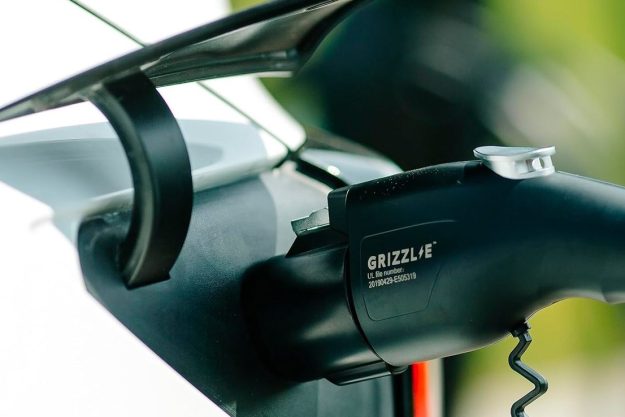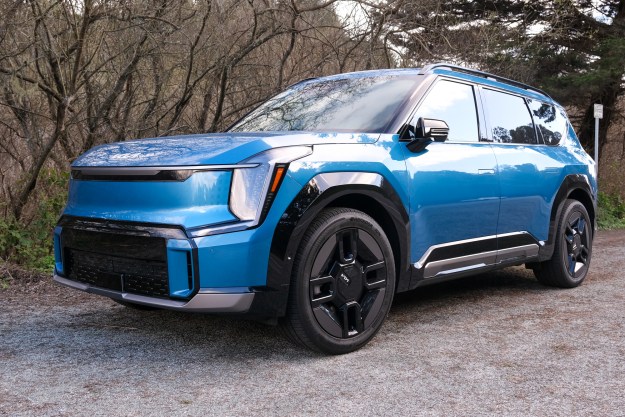The brand-new 720S is the most important road car McLaren has ever launched. With the 650S, the British company proved it has the muscles and the brains to compete against well-established names like Ferrari and Lamborghini both on and off the track. The new Super Series model needs to cement that reputation by going above and beyond its predecessor in every way.
We chatted with Mark Vinnels, McLaren’s executive director of vehicle development, to get the inside scoop on what went into developing the 720S.
Digital Trends: The 720S is a drastic departure from the outgoing 650S, not merely a face-lift or a major update. What was the most difficult part of the development process?
Mark Vinnels: It was the integration of the aerodynamics. We knew we had a higher output engine, so what we didn’t want to do was increase the size of the cooling circuit – a bigger radiator adds mass, and that’s our enemy.
If you keep adding mass to offset the thermal output of the engine you’re not achieving anything; you’re just chasing a vicious circle. We knew we had to improve the cooling efficiency, which meant putting a big emphasis on aerodynamics in parallel with the styling. I don’t think we could have done it five or six years ago.
Why is that?
Because, we didn’t have the ability to iterate CFD models quite so quickly, or to send information about what’s good and what’s bad back to the design studio as fast. It’s a very interesting process. We have designers, aerodynamicists, and feasibility guys working really closely, iterating through ideas to see if they work from an aerodynamic perspective, to see if they work aesthetically. That process is key to how we’ve been able to design this car.
Why 720 horsepower?
There’s a bit of positioning there in terms of our own models, and where we expect the competition to be. It was pretty clear from the start that we needed to arrive at that number.

The important point is that we’re not just chasing power. A lot of the changes that have gone into the engine were made to enhance the driving experience, how it sounds, the way it revs, the way it delivers torque, and the throttle response. It’s not just about brutal force; that’s really important to us. That aspect drives more changes than just the power increase.
When you’re developing a car like the 720S, is it difficult to balance sport and comfort?
We want to give this car a great breadth, so taking it to the next level of performance on the track while also making it comfortable and compliant on the road is a real challenge. It’s not like tuning a race car so that a particular driver can drive it on a particular circuit on a particular day.
The last thing we want from a McLaren is to have it be intimidating.
We have to appeal to a broad range of drivers in all conditions, and give them all an enjoyable experience behind the wheel. Even a completely inexperienced driver will still want to enjoy the car, so we made it easy to drive so that anyone can learn and develop their skills. At the other end of the spectrum, a pro driver can get in the car and not feel held back. It’s due to the way we calibrate the ESP, and the way we manage the brake feel and the throttle response. We spend a lot of time getting it right. Talking to different drivers, reviewing and scoring the car.
The last thing we want from a McLaren is to have it be intimidating. We want the driver to be able to get into the car and feel comfortable, even before the car starts moving. That means studying the positioning of all the controls and improving the visibility – obviously forward but also behind. So many of the cars that you get in are intimidating and difficult to drive. What we’re about is making it as easy and enjoyable to drive as possible.
Other than through carbon fiber, how did you lower weight?
We’ve removed 16 kilos (about 35 pounds) from the suspension just by optimizing the design of the components. It reminds me of an expression we have in England that says, “you manage the pennies and the pounds will take care of themselves.” We’re completely obsessive about every gram on every component, so the net result tends to be good.
There are three ways to manage weight: make the car as small as possible, be obsessive about every single component, and push the technology of the materials. Do all of those things consistently and you end up with a very lightweight car. That’s what we’ve done.
How important are tech features to your customers?
They’re important but not in a gimmicky way. What we want to do is enhance the driving experience. The rotating instrument cluster looks cool and it’s fun; it’s what makes you smile when you get in the car. But, when you’re driving on the track or driving at night, or if you just want a completely clear view, it’s great.
Yeah, we’ve got great audio, and drivers want great audio. We’ve got really nice navigation, and the track telemetry tool is cool. It lets you record track runs, including video footage from cameras on all sides of the cars. You can zoom in on a specific part of the track to get more details, too. And, the infotainment system is all-new.
We’re engineering-led and not marketing-led. There are features we want to deliver to customers, and there are some features we want to deliver that customers don’t know they want. They don’t know they want a moving instrument cluster, but when they experience it I think they will really appreciate it.
What about the tech features that users don’t normally interact with?
We’re completely obsessive about every gram on every component, so the net result tends to be good.
The new chassis control software is completely ground-breaking. It’s based on optimal control theories, so it’s extremely advanced mathematics. By measuring the force on every wheel relative to the body, we can optimize the way the car performs, partly regarding the contact patch and grip. Nobody else does it. That’s ground-breaking.
There’s been a lot of talk about the hybrid tech trickling down from the P1 to more affordable models. Is that something we can expect from the 720S?
Not yet. A lot of that is due to the package and the commercial proposition. The price of high-performance batteries, and how we could commercially deliver them without the weight penalty.
We could put a hybrid system in the car, it would add 150 kilos (about 330 pounds), and deliver it for a price, but it’s going to destroy the driving experience. However, battery technology is moving all the time, and we are heavily involved in it. So, for the future, bringing the performance without the weight penalty is what we’re aiming at.
Does that mean you need a battery pack with a higher energy density?
Check out the trick folding instrument cluster in the new #McLaren #720S. | @McLarenAuto pic.twitter.com/fHGP0riE1l
— Ronan Glon (@EuropeanCarNews) March 7, 2017
Absolutely. That’s interesting as well: we talk about energy density versus power density. The world is largely looking at energy density because electric vehicles need maximum range. We need that, too, but we also need the cell to discharge quickly, which requires power density. That drives you into slightly different battery cell chemistry, which is quite unique for our requirements.
The 650S wasn’t on the market for all that long. Why did you decide to have such short model cycles?
I think we’re still the new kid on the block, we’re still learning. People like what we’ve done so far, thankfully, and I think they’ll continue to like it, but we are the development brand and we want to make a certain statement. We want to demonstrate to our customers the capability that we have.
We’re working on nine car programs at the moment, so there’s a lot of stuff going on. Some of them will come out very soon, and some of them are way out. That’s the company we are.








